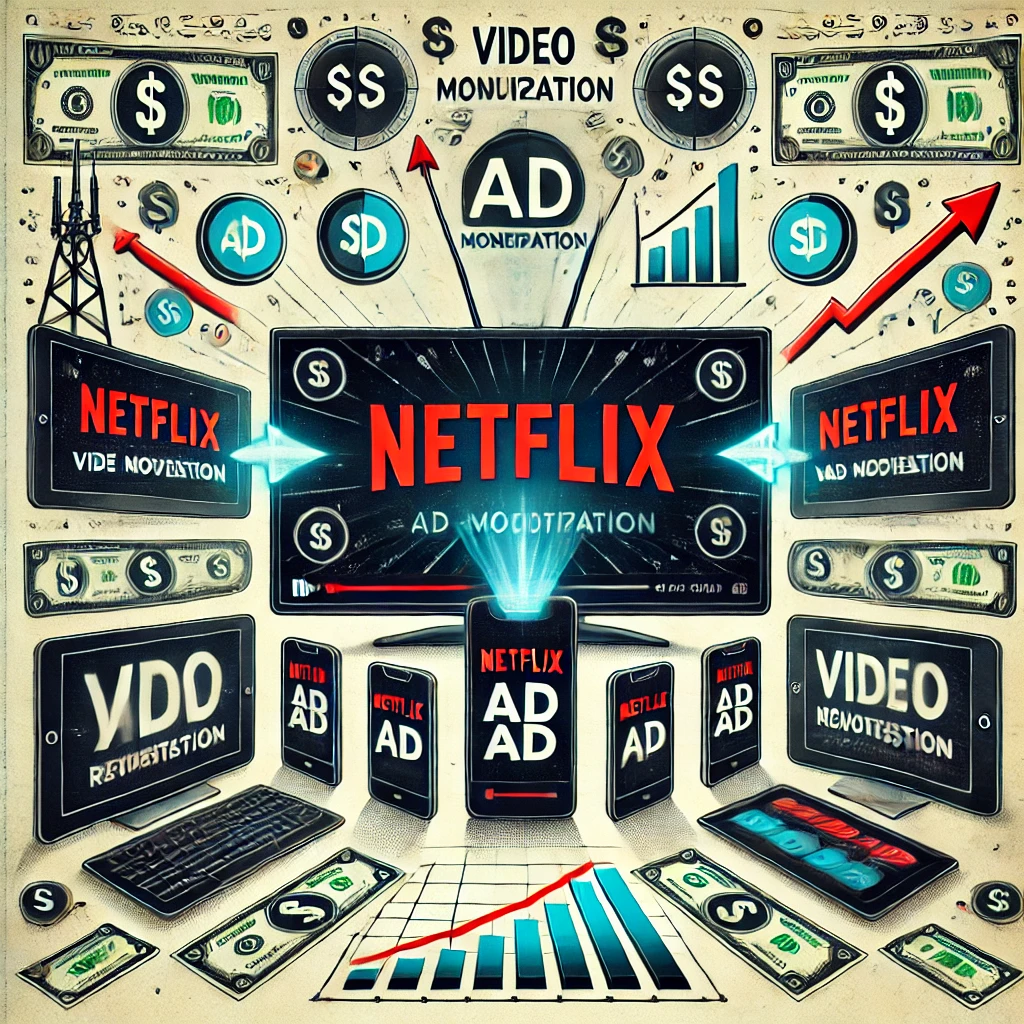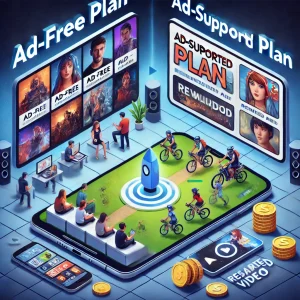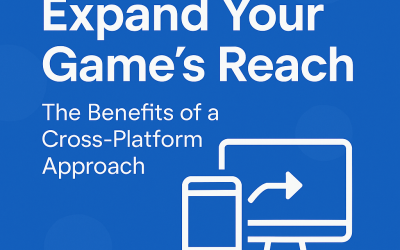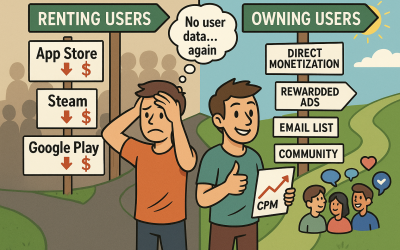Ad-Supported Monetization: Lessons from Netflix’s Ad Revenue Strategy
As the streaming industry evolves, ad-supported monetization is becoming a central part of the revenue model for companies like Netflix. Initially known for its ad-free, subscription-based service, Netflix has now embraced advertising to attract a broader range of consumers and capitalize on a new revenue stream.
In this blog, Ad-Supported Monetization: Lessons from Netflix’s Ad Revenue Strategy, we’ll explore Netflix’s ad-supported tier, the growth of its advertising business, and what this means for the future of monetization in streaming services. This shift reflects a larger industry trend where even premium content providers are exploring ad-supported models to balance user experience with profitability.
Contents
The Rise of Ad-Supported Monetization
Continuing on my Lessons from Netflix’s Ad Revenue Strategy Post,, the shift to ad-supported models isn’t new, but it’s gaining momentum as subscription fatigue sets in. Consumers are becoming more cost-conscious, and many are willing to view ads in exchange for lower-priced services. For content providers, this opens up additional revenue streams while still retaining a subscriber base. In this context, Netflix’s introduction of an ad-supported tier has been a game-changer.
What is Ad-Supported Monetization?
Ad-supported monetization involves offering services at a lower cost (or even for free) in exchange for showing ads to users. This model balances affordability for subscribers with the ability to generate ad revenue, often resulting in higher total revenue than a purely subscription-based model.
Netflix’s Ad-Supported Tier Performance
Continuing my Ad-Supported Monetization: Lessons from Netflix’s Ad Revenue Strategy post, Continuing on Ad-Supported Monetization: Lessons from Netflix’s Ad Revenue Strategy post, Since the launch of its ad-supported plan, Netflix has seen strong results, particularly in subscriber growth and engagement.
- 35% Subscriber Growth: In Q3 2024, Netflix’s ad-supported tier saw a 35% increase in subscribers quarter-over-quarter, signaling strong demand for lower-priced, ad-inclusive options.
- 50% of New Sign-ups: In markets where the ad-supported tier is available, over half of new subscribers opted for this plan. This suggests that price-sensitive users are a significant portion of Netflix’s target audience.
Netflix’s success with this model demonstrates that ad-supported monetization can be a viable way to attract a wider range of consumers while increasing overall platform revenue.
Revenue Projections and Growth
Netflix’s ad-supported tier is not just about gaining new subscribers; it’s also driving significant advertising revenue.
- Ad Revenue Doubling by 2025: Netflix expects its ad revenue to double year-over-year by 2025, indicating confidence in the growth potential of its ad business.
- 150% Increase in U.S. Ad Sales: The company experienced a 150% increase in U.S. upfront ad sales commitments, reflecting advertiser confidence in the platform’s reach and effectiveness.
For platforms looking to monetize through ads, Netflix’s projections highlight the potential for rapid growth, particularly in established markets like the U.S.
Strategic Focus on Scale and Monetization
Continuing on my Lessons from Netflix’s Ad Revenue Strategy Post, Netflix is focusing on two key areas to ensure the success of its ad-supported model: building scale and improving monetization.
- Scale in 12 Markets by 2025: The company expects to reach critical scale in all 12 of its ad-supported countries by 2025, signaling its intent to expand this model globally.
- Increasing Inventory: Netflix is also working to increase the volume of ads it can serve, which will be crucial for maximizing revenue as its ad business grows.
This strategic focus on both expanding reach and improving ad inventory positions Netflix to capture even more revenue from advertisers, making it an essential case study for other platforms exploring ad-supported models.
Attracting Price-Sensitive Consumers
Continuing on Ad-Supported Monetization: Lessons from Netflix’s Ad Revenue Strategy post, One of the key selling points of Netflix’s ad-supported tier is its affordability. At $6.99 per month, the ad-tier is less than half the cost of Netflix’s standard plan, making it an attractive option for consumers looking to save money.
- Consumer Preferences: A Statista survey revealed that 66% of Americans are willing to watch ads to save money on streaming services. Netflix’s pricing strategy capitalizes on this sentiment, offering an affordable alternative for price-conscious viewers.
This tiered pricing model ensures that Netflix can attract both premium subscribers and budget-conscious users, maximizing its reach across different audience segments.
Future Outlook for Netflix’s Ad Business
While Netflix’s ad-supported tier is still in its early stages, the future looks bright. The company expects advertising to become a significant revenue driver, especially as it reaches scale in key markets.
- Critical Scale by 2025: Netflix plans to reach critical scale in all of its ad-supported countries by 2025, ensuring it can offer a robust advertising product to brands across the globe.
- Long-term Growth: As the ad business grows, Netflix anticipates that advertising will play a major role in its long-term revenue strategy, particularly as the streaming industry becomes more competitive.
Netflix’s successful introduction of an ad-supported tier underscores the growing importance of ad-supported monetization for streaming platforms. With strong subscriber growth, impressive ad sales, and a strategic focus on scale, Netflix is setting the standard for how premium content providers can integrate ads into their revenue model without sacrificing user engagement.
For platforms considering ad-supported models, Netflix’s example offers valuable lessons in pricing strategy, user engagement, and long-term growth potential. As ad-supported monetization continues to rise, it’s clear that this approach offers both consumers and platforms a win-win solution.
 AppLixir as the Right Partner for Monetization
AppLixir as the Right Partner for Monetization
Continuing on my Lessons from Netflix’s Ad Revenue Strategy Post, while Netflix’s success with ad-supported monetization is a compelling example for streaming services, game and content providers have their own unique opportunities in the realm of rewarded video ads. Rewarded video ads offer users an incentive, such as in-game currency, extra lives, or exclusive content, in exchange for watching an ad. This method not only enhances the user experience but also provides an effective way to monetize free-to-play games and content-driven platforms.
AppLixir, a leading rewarded video ad platform, enables developers and content creators to maximize revenue without compromising user satisfaction. Here’s how AppLixir helps game and content providers successfully integrate rewarded video ads:
-
Seamless Integration with Minimal Disruption
AppLixir’s platform is designed for smooth integration into web and mobile games as well as content platforms. By embedding rewarded video ads naturally into the user experience, developers can introduce ads without frustrating or alienating users. For instance, when a player runs out of lives in a game, they can watch a short video ad in exchange for extra lives or power-ups, creating a seamless and rewarding experience.
-
Enhanced User Engagement
Rewarded video ads typically result in higher user engagement because they offer tangible rewards in exchange for viewing ads. Users feel more in control, which increases their willingness to interact with ads. This makes rewarded video ads more effective than traditional interstitial or banner ads, as users are more likely to pay attention and engage. AppLixir’s robust ad platform ensures that the ads are relevant and targeted, maximizing the value of each interaction.
-
Boosting Ad Revenue
For developers and content creators, the key goal of any ad strategy is to drive revenue. AppLixir helps game and content providers optimize their monetization strategy by offering high-quality video ads from leading brands, ensuring better CPM (cost per thousand impressions) rates and higher fill rates. This translates to more consistent and substantial revenue compared to standard ad formats.
-
Ad Experience Customization
AppLixir allows game and content developers to customize the placement and frequency of rewarded video ads, ensuring they complement the user experience rather than disrupt it. This flexibility enables developers to create a more organic experience that enhances both engagement and monetization. Whether it’s a pause between game levels or during content breaks, AppLixir’s platform offers developers full control over how and when ads are displayed.
-
Retention and Loyalty Benefits
Continuing on Ad-Supported Monetization: Lessons from Netflix’s Ad Revenue Strategy post, One of the standout advantages of rewarded video ads is the positive impact they have on user retention. Players or users who receive valuable in-game items or content through rewarded ads are more likely to stay engaged with the platform. This increases both retention rates and lifetime value (LTV) for developers and content creators. AppLixir’s platform helps maximize these benefits, ensuring that the ads contribute to long-term user loyalty.
As Netflix demonstrates the growing potential of ad-supported monetization for premium video services, other platforms, particularly in gaming and content creation, can follow suit with different ad formats, like rewarded video ads. AppLixir provides an industry-leading solution for game developers and content providers looking to capitalize on this trend. With AppLixir, you can integrate high-performing rewarded video ads that increase revenue, improve engagement, and foster user retention—all while maintaining a positive user experience.
By partnering with AppLixir, game developers and content providers can leverage rewarded video ads to maximize their revenue potential without sacrificing user experience. With tools for ad customization, seamless integration, and user engagement analytics, AppLixir offers a comprehensive solution to help platforms monetize effectively.



